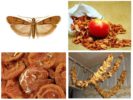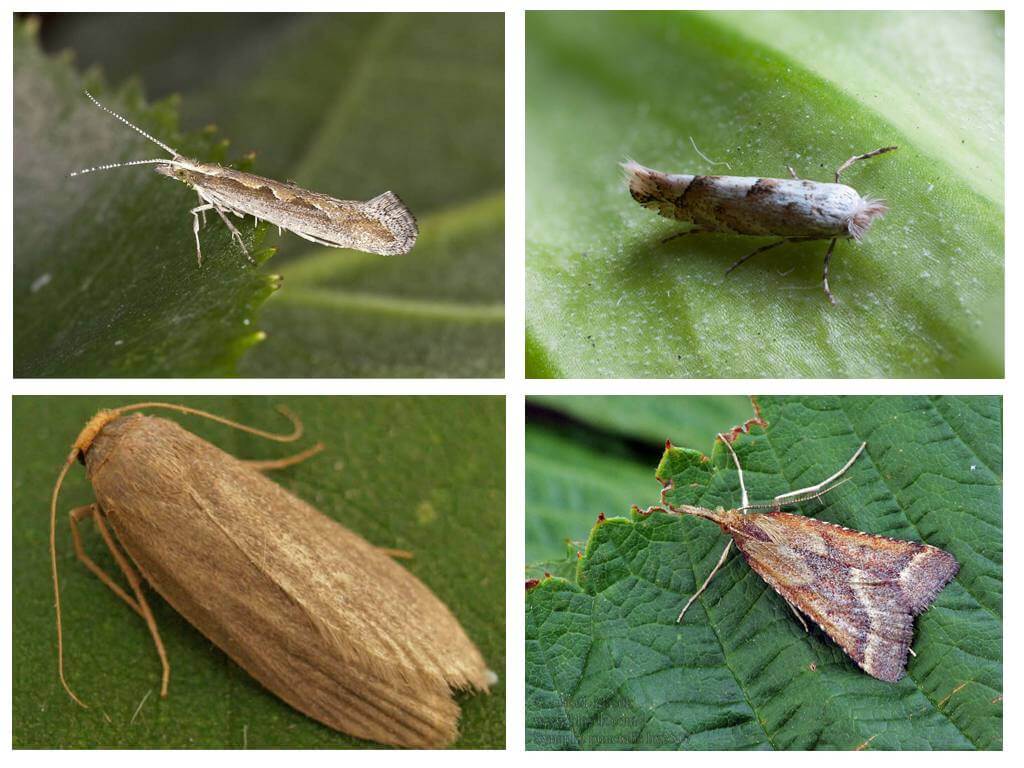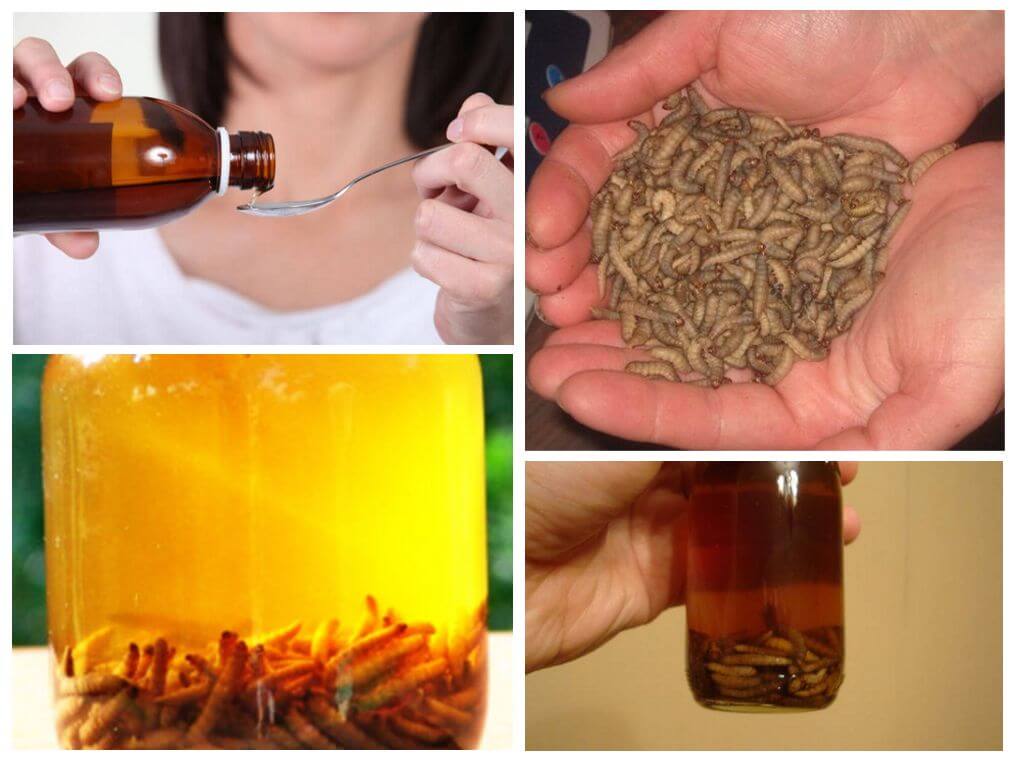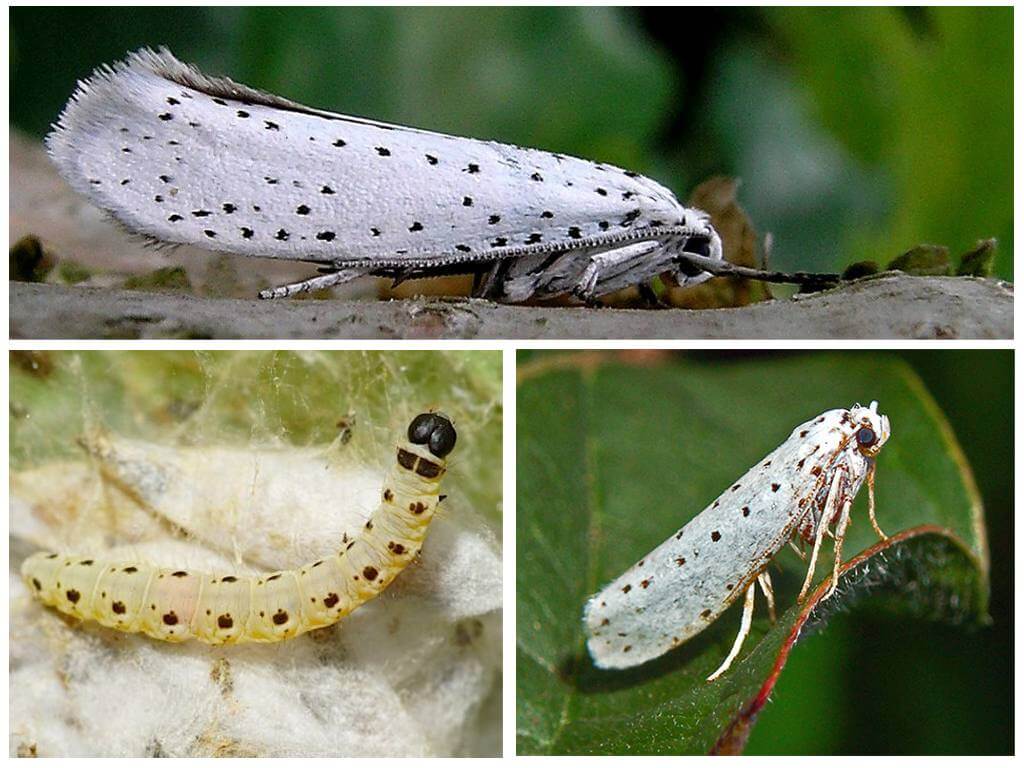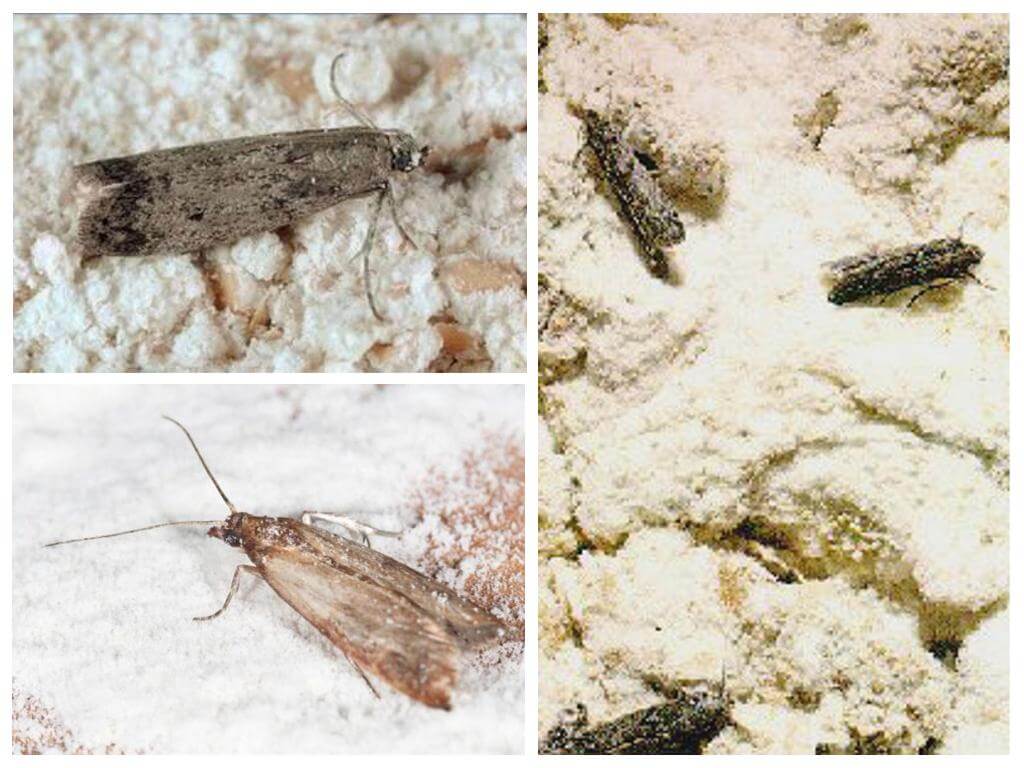- Food moth
- Dried apple moth
- Folk remedies for moths
Dried fruit compote is very healthy and an excellent alternative to packaged juices, which are usually full of dyes, preservatives and sugar. Therefore, in the house of those who care about their health, there are always dried apples, pears, dried apricots and other fruits. But if you store them incorrectly, you may expect an unpleasant surprise: one fine day, a flying insect - a fruit moth - appears in the closet.
Insect features
It is difficult to get rid of fruit moth - this gluttonous insect is not so easy to detect at the very beginning. The fact is that adults are already flying around the kitchen, but they don’t eat anything at all. Their main goal is to find a secluded place and lay eggs there, from which they will hatch in a few days moth larvae. So they turn delicious dried fruits into real dust.
You can recognize fruit moth by the characteristic stripes on the tips of the wings. It is small in size, only about 1 cm long. Look at the fruit moth in the photo so that if it appears you can identify the enemy by butterfly moth look. Grown larvae can be seen with the naked eye, they do not look like small worms. They are hatched from eggs hidden in a cocoon, as if twisted from a cobweb.
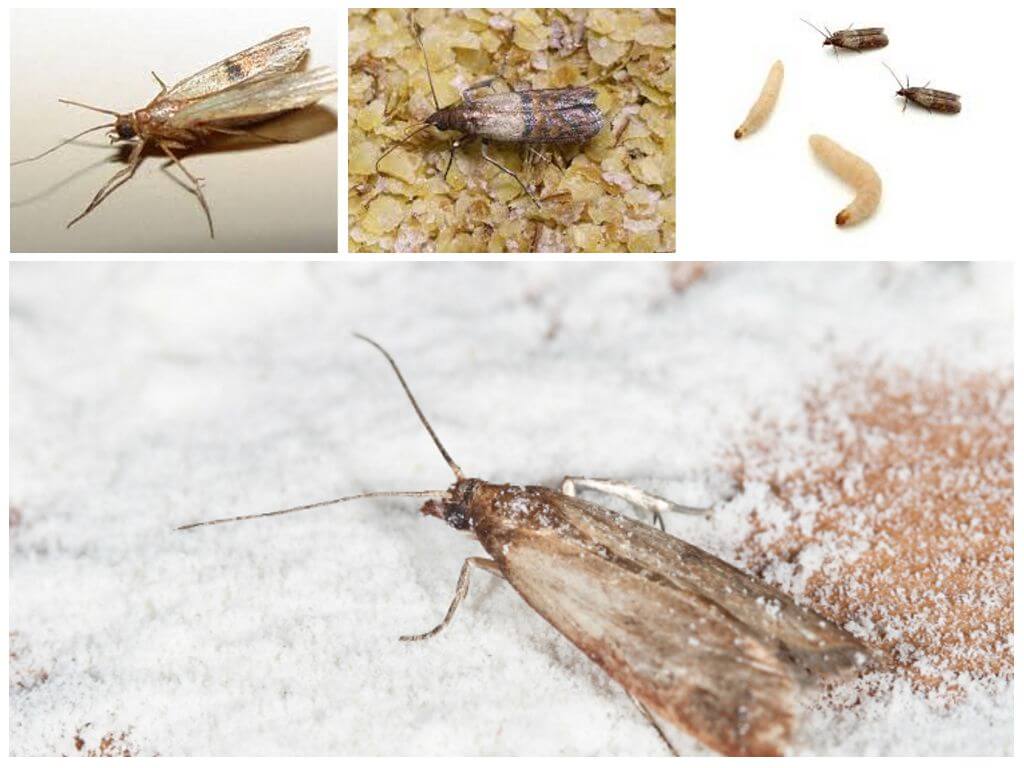
Fruit moles can start not only in dried fruits. A great habitat for her are bags of cereals or flour. Prefer moth larvae to eat sweet fruit, but the butterfly can lay eggs in a dry place next to them, and the hatched larvae will crawl to the treats on their own.
Fortunately, they do not crawl over long distances, so fruit moth can be started in an apartment in only one of the following ways:
- fly through ventilation ducts and settle in a cabinet with products;
- get into the house with a new batch of low-quality dried fruits;
- fly into the open window, especially in the evenings when the light is on in the windows.
Therefore, it is quite possible to protect oneself from its appearance and make it much easier than to get rid of moths in dried fruits.
How to protect yourself from moths
So that the moth in dried fruits does not start, you must carefully inspect them before buying. High-quality dried fruits have a smooth surface, without holes and other visible damage. Holes make moth larvae, biting into the pulp of dried fruits.
It is necessary to install a mesh with small cells on the ventilation openings, which will freely let air through, but retain moths and other small insects. So that the mesh does not interfere with the normal operation of the ventilation and does not impede the circulation of air, it must be regularly washed or wiped with a damp cloth, better moistened with acetic solution.
In the cold season, the moth does not fly along the street and, accordingly, it can penetrate the window. But in spring and summer, an installed moxitic net will help protect the apartment from pests, which will not allow them to penetrate from the street and spoil your products.
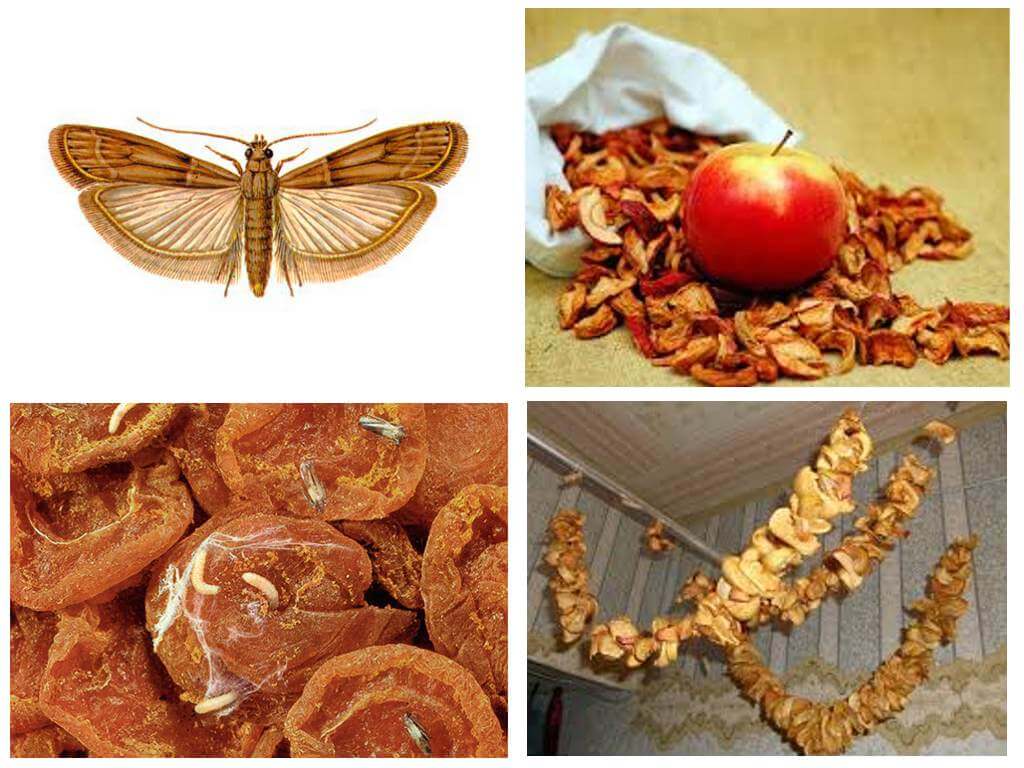
How to store dried fruits
If dried fruits are stored properly, then the chances that the fruit moth will spoil them can be practically nullified.Definitely you can’t dump everything in one big pile or wrap it in a plastic bag. These are ideal conditions for mold and dried fruits will deteriorate so quickly. Small moth larvae can even crawl through a very small hole, which is completely invisible, but after a while it will be found that all products are spoiled
Observe the following rules to save dried fruits from moths at home:
- it is better to store freshly bought at least for the first time separately - send them to a kind of quarantine;
- glass or metal containers with a tight lid are best suited for storing dried fruits (cover the bottom with metal!);
- every 7-10 days of the container with dried fruits and if cocoons, larvae or adult moths are found there, discard everything that was in the container, and thoroughly process it.
In summer, you can store dried fruits in wooden boxes on the balcony - the pest does not like sunlight and air currents, so such conditions are completely unsuitable for it. At the same time, dried fruits will be dried, moisture will leave from them, which could have accumulated during home storage.
On a note!
If a mole is wound up in dried fruits, then even after you have removed all the spoiled ones, you will have to make it a rule to carefully inspect the remaining intact foods before using them. You might not have noticed fruit moth eggs or newly formed larvae. But they will grow up and the insect will continue the breeding cycle.
How to deal with moths
There are a lot of remedies for fighting fruit moths. And here it is just better not industrial ones that contain poison, harmful to humans, but folk methods. But first of all, it is necessary to free all the cabinets and carefully recheck all the contents.

After all the damaged products have been thrown away into the new ones correctly packed, it is necessary to thoroughly wash all the surfaces of the cabinet (not just the shelves!) With ordinary food vinegar diluted in half with water. Particular attention should be paid to the far corners and the back surface of the shelves - this is where fruit moth most often lays cocoons with eggs.
Then, on the shelves, you need to lay out the funds that fruit moth really does not like:
- dry orange or tangerine peels;
- sachets with spices: allspice, coriander, cinnamon;
- dry laurel branches or sachets with a leaf;
- bags with herbs: lavender, mint, wormwood, oregano;
Moreover, it should be borne in mind that all these folk remedies for moths they do not kill, they only repel the insect and over time the larvae can adapt to them. Therefore, in order to guarantee the preservation of products, it is better to alternate them approximately every 2-3 months.
It is useful to put an open container of salt in the cabinet. It will absorb excess moisture, creating a microclimate that is too dry for the moth. At the same time, the salt will fight against the appearance of mold and will not allow dried fruits to become wet. Compliance with these simple rules will reliably protect your home from fruit moths, and you can always enjoy your favorite treats.

